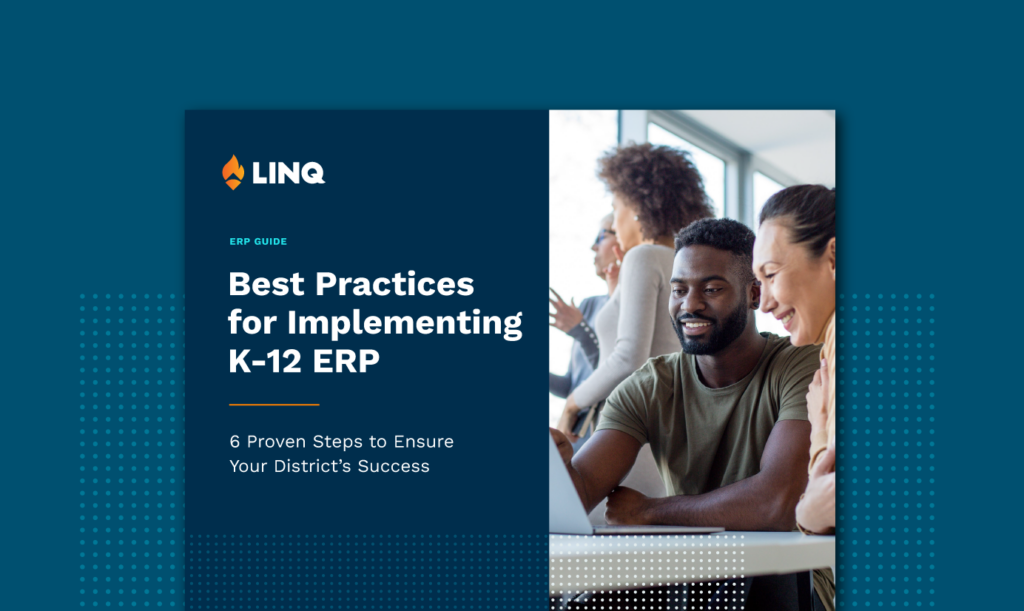Best Practices for Implementing K‑12 ERP
6 proven steps to ensure your district’s success

After months of research, phone calls, RFPs, and demos,
you did it! You’ve finally selected new K‑12 software for
your district. What a relief!
But if you think that the work is done when you sign the contract, think again.
Implementing new software can be a challenging, stressful experience for even the most seasoned staff. A recent study by the EdTech Genome Project, a group of more than 100 education research and advocacy organizations, reports that adoption plans, competing priorities, and support are some of the top 10 variables that make-or-break implementations.
And when it comes to implementation, enterprise resource planning (ERP) systems represent some of the most complex projects. An ERP implementation is a significant project with a broad impact, supporting many of a district’s critical business activities, including accounting, budgeting, human resources, payroll, and inventory management.
Investing additional time and effort into your implementation can ensure your K‑12 ERP project’s success. Following best practices through each phase of the process can help your implementation run smoothly and help your district realize all the benefits of your new system.
Download this guide to learn six proven steps for a more successful K‑12 ERP implementation.